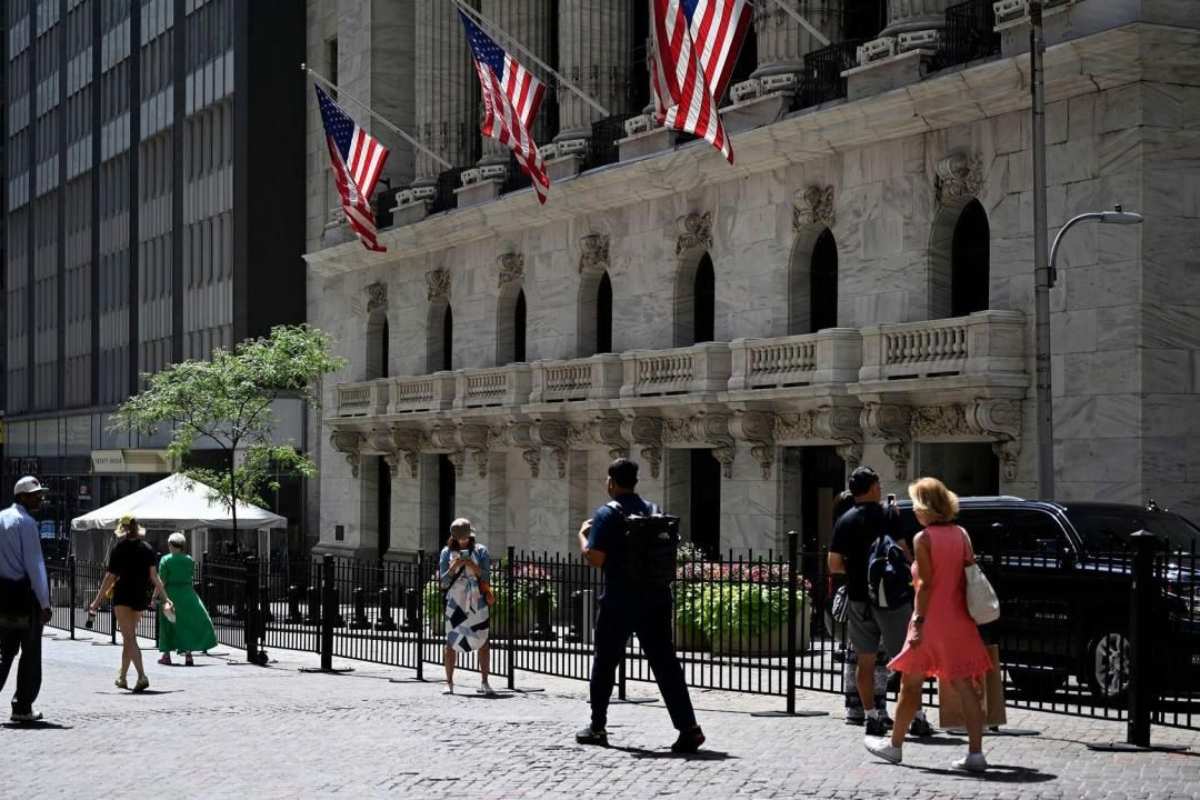Market Response to Fed’s Decision
On Thursday, stocks soared as investors reacted positively to the Federal Reserve’s bold rate cut unexpected half-point interest reduction. The Dow Jones Industrial Average closed up 522 points, or 1.3%, marking a new record by surpassing the 42,000 mark for the first time. The S&P 500 also reached a milestone, climbing 1.7% to close above 5,700. The Nasdaq Composite experienced a robust gain, increasing by 2.5%.
Tech Stocks Lead the Charge
Technology shares were particularly strong performers, with Nvidia seeing a 4% increase. Tesla shares jumped 7.4%, while Meta Platforms and Apple recorded gains of 3.9% and 3.7%, respectively. The enthusiasm around tech stocks contributed significantly to the overall market rally.
Asian Markets Follow Suit
The positive momentum continued into Friday’s trading session in Asia. Japan’s Nikkei index rose by 2% in morning trading, South Korea’s Kospi climbed 1%, and Hong Kong’s Hang Seng gained 1.3%. The ripple effects of the Federal Reserve’s decision were evident as global markets responded favorably.
Federal Reserve’s Unprecedented Move
On Wednesday, the Federal Reserve’s bold rate cut made headlines as it implemented its first rate reduction since the onset of the COVID-19 pandemic, bringing interest rates down from a 23-year high. This half-point reduction was larger than the more cautious quarter-point cut many investors had anticipated.
This decision signals a shift in the Fed’s approach. While lower interest rates generally reduce borrowing costs for companies and consumers, potentially alleviating some economic pressure, they also raise concerns about inflation. A significant rate cut could undo some of the Fed’s previous efforts to manage price stability.
Balancing Inflation and Employment
The Fed’s latest move reflects a transition from a focus on curbing inflation to prioritizing employment. Fed Chair Jerome Powell noted that while the job market remains solid, it is not as robust as it was pre-pandemic. The dual mandate of the Federal Reserve—to promote maximum employment while maintaining price stability—has now shifted in favor of job preservation.
Market strategist Ronald Temple remarked that the Fed is acting as a safeguard against further deterioration in the labor market. Investors are cautious, having experienced a rollercoaster of market fluctuations recently, with sharp declines followed by new record highs. Many had feared that the Fed had delayed its rate cuts for too long, increasing the risk of an economic downturn.
Future Rate Cuts and Economic Outlook
Despite the Federal Reserve’s bold rate cut, Powell warned that this pace of adjustment should not be expected to continue indefinitely. The Federal Reserve’s updated economic forecasts indicated that officials anticipate further rate cuts in 2024, a shift from their earlier prediction of only a single cut this year.
Additionally, the Fed projects that unemployment could rise to 4.4% by the end of the year, slightly up from August’s rate of 4.2%. This expectation suggests that while the economy shows signs of resilience, there are still headwinds ahead.
Conclusion: Market Stability in Flux
As markets settle after the trading day, the numbers may experience slight adjustments. However, the broader implications of the Fed’s actions are being felt across the economy, with both opportunities and challenges ahead. Investors remain vigilant, aware that the balance between stimulating growth and controlling inflation is delicate and crucial for future market stability.







